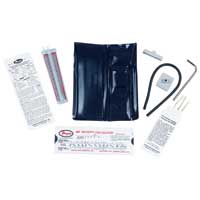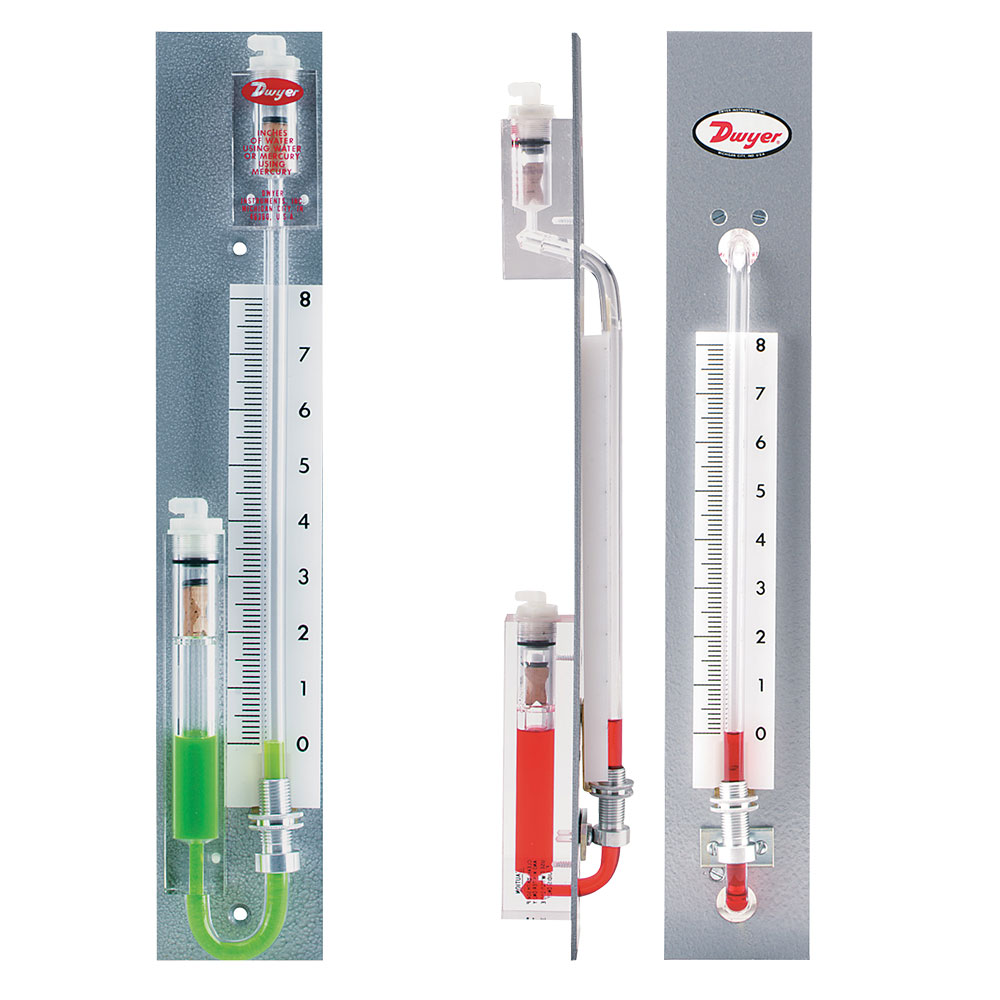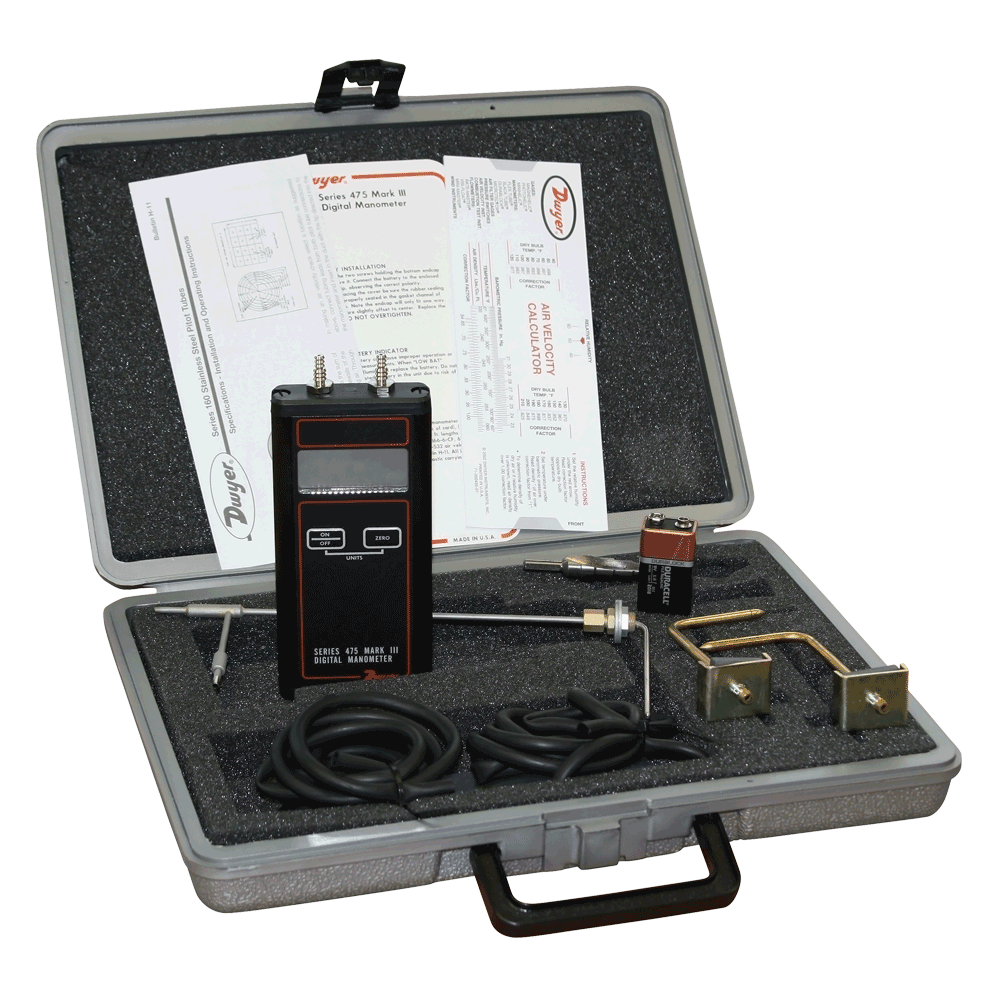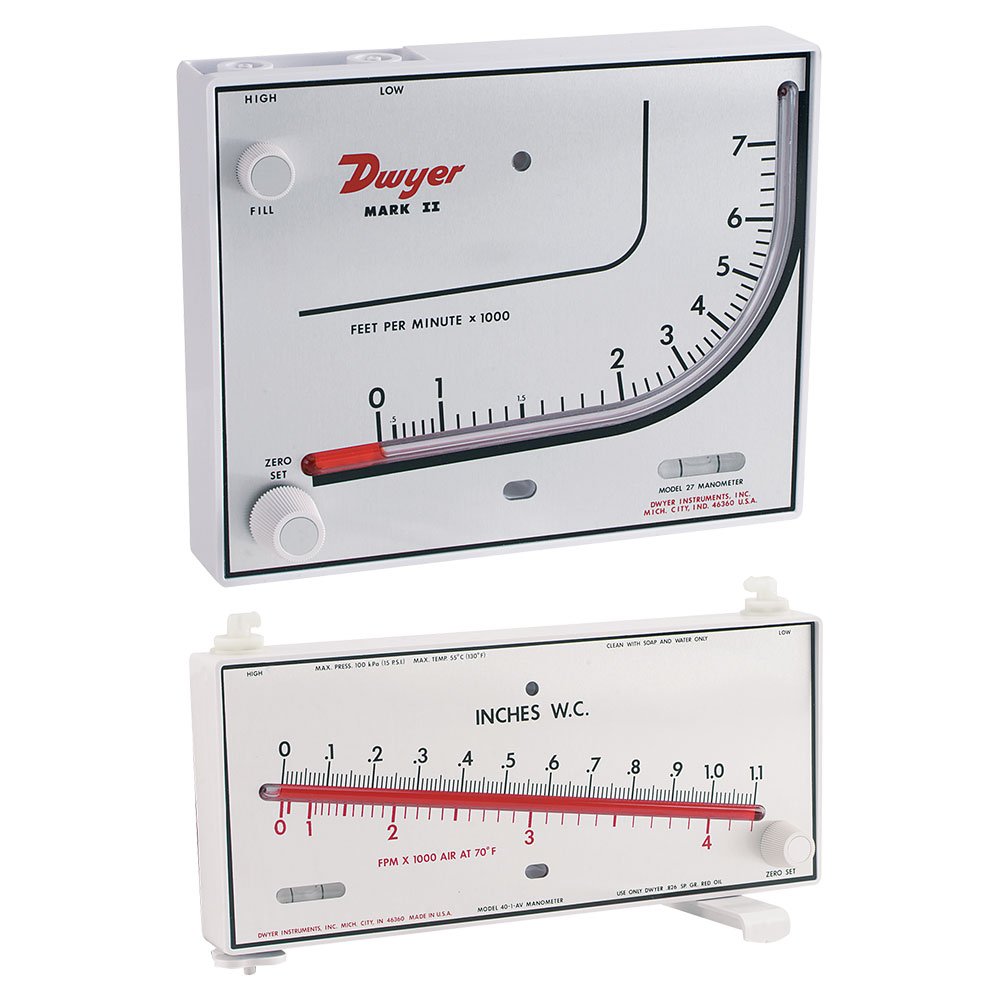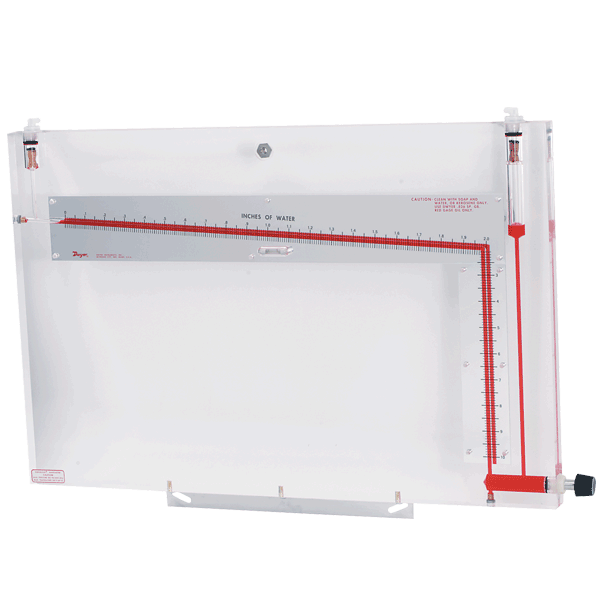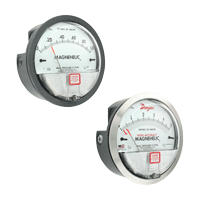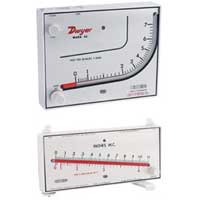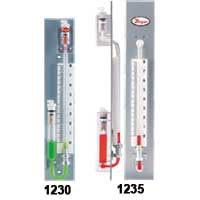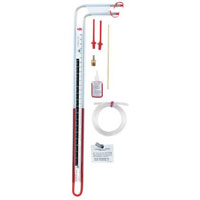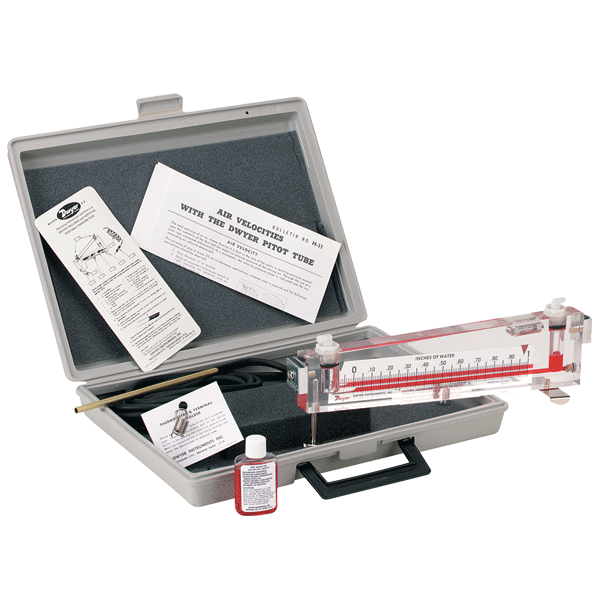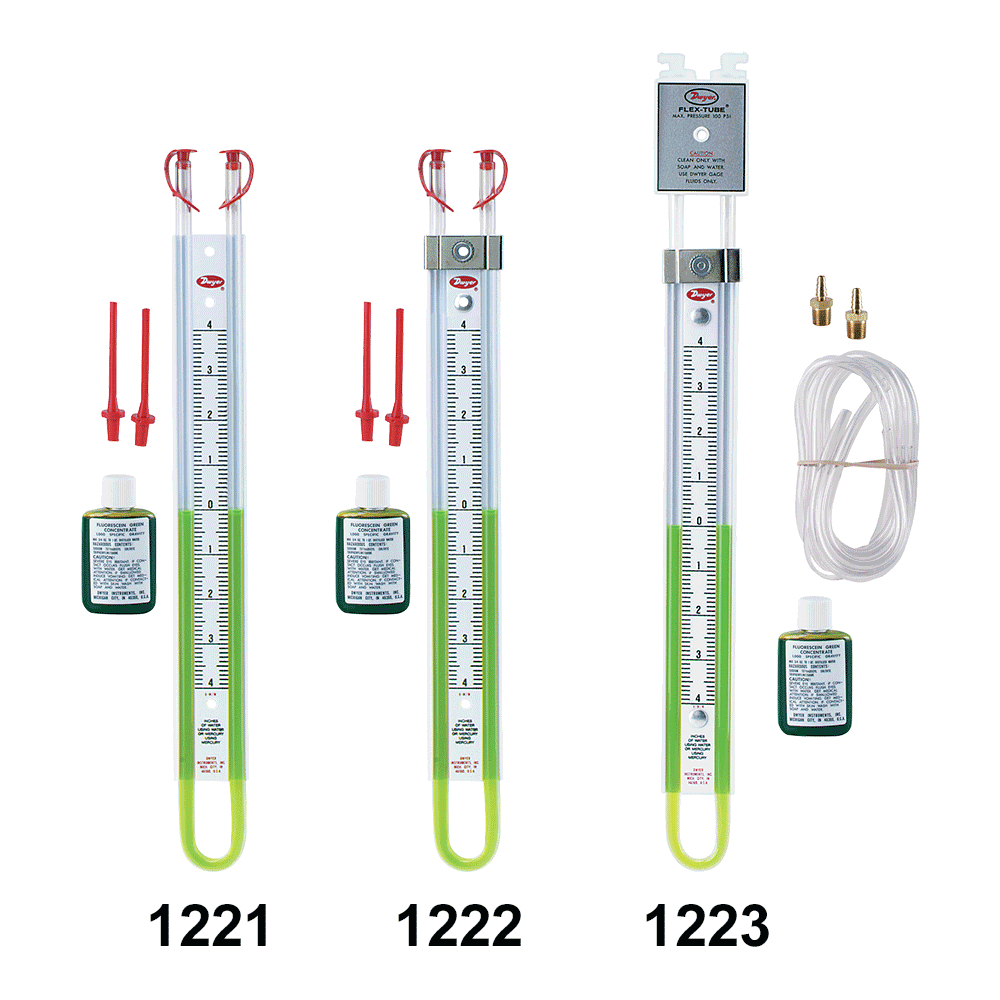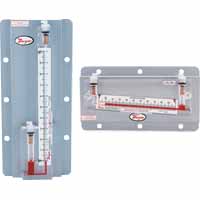Air Velocity
Air Velocity instruments are portable manometers which indicate pressure and air velocity. Dwyer's air velocity models are accurate instruments designed for measurement of low differential pressures in laboratory and test applications. Ideal for measurement of low range gas and air pressures, positive, negative or differential.
- Series 400 Air Velocity MeterAir Velocity Meter has applications in air balancing and building comm ...Starting at $922.20
- Series 100 AV Durablock® Air Velocity Gage KitDurablock® Air Velocity Gage Kit measures air velocity, static pressu ...Starting at $1,183.35
- Series 477-1T-AV Air Velocity KitsAir Velocity Kits is small, light and easy-to-use. No set-up or leveli ...Starting at $1,081.75
- Series 200 & 300 Durablock® Solid Plastic Stationary GageDurablock® Solid Plastic Stationary Gage offered in inclined and vert ...Starting at $865.80
- Series 1230/1235 Flex-Tube® Well-Type ManometersFlex-Tube® Well-Type Manometers as a wall mount or a panel mount. A ...Starting at $513.80
- Series 420 Durablock® Inclined/Vertical ManometerDurablock® Inclined-Vertical Manometer is an inclined-vertical manome ...Starting at $1,469.75
- Series 250-AF Inclined Manometer Air Filter GagesInclined Manometer Air Filter Gages are virtually unbreakable and free ...Starting at $671.30
- Model 475-1-FM-AV Air Velocity KitAir Velocity Kit is small, light, and easy to use. No set-up or leveli ...Starting at $631.75
- Series Mark II Molded Plastic Air Velocity MeterMolded Plastic Air Velocity Meter ...Starting at $91.50
- Model 475-1T-FM-AV Air Velocity KitAir Velocity Kit is easy to see in poorly lighted areas and has "low b ...Starting at $795.10

